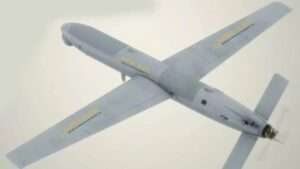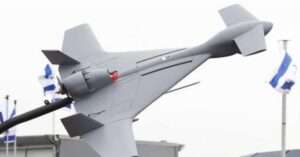India’s precision strikes on militant training facilities of Pakistan and Pakistan Occupied Kashmir after the deadliest Pahalgam attack, which killed 26 civilians. India’s indigenous drones played a crucial role in neutralizing incoming threats from Pakistan’s retaliatory attempts. This is not only a military success but also became a stage to demonstrate the strategic edge of the indigenous drone systems of India to redefine modern warfare.

At the forefront were SkyStriker kamikaze drones manufactured in Bengaluru through a partnership between Alpha Design Technologies, Adani Defence and Israel’s Elbit Systems. These precision loitering drones are stealthy and have a 100 km range with a 5-10 kg warhead size and in less than 25 minutes locked onto nine terror targets, including Jaish-e-Mohammed(JeM) and Lashkar-e-Taiba(LeT) safe havens in Bahawalpur and Muridke in Pakistan. SkyStriker drones are designed with a very low acoustic signature and can loiter for 2 hours, making them deadly and elusive. Another standout system was the Nagastra-1, an Indian drone, from the collaboration of Nagpur’s Solar Industries and Bengaluru’s ZMotion. The Nagastra-1 had a 1-kg warhead and parachute recovery system for accuracy and reusability, and was a testament to India’s commitment to defence indigenization of self-reliance in defence technology.


The Indian Armed Forces also used Harop drones, modified for Indian needs but developed by Israel, which were instrumental in Operation Sindoor. They could stay in the air for nine hours and were equipped with high-end cameras and enhanced payloads. Harop was able to locate key elements of Pakistani radar systems, including a radar system based in Lahore. India’s intelligence agency, National Technical Research Organisation(NTRO), supplied real-time information to locate small, low-cost swarm drones developed by DRDO and NewSpace Research that struck enemy positions. In addition to these Indian drones, IG Drones was from Noida, where they supplied special vertical take-off and landing (VTOL) drones and first-person view (FPV) drones. The drones allowed the operation to collect extra intelligence by mapping the terrain and getting the location of hidden terror camps to facilitate the mission, scheme and marked a strategic and technological triumph.


Pakistan’s counteroffensive, utilizing 600-plus Chinese and Turkish drones, fell inactive as India used its S-400 and Akashteer systems, exposing the vulnerabilities in its defence. Operation Sindoor did much to dismantle terrorism infrastructure, but it sent a worldwide message: India’s drone capabilities could rival the best. As the use of drones is set to rapidly increase, the drone market is expected to reach $11 billion by 2030. Operation Sindoor demonstrated the cleverness of Indian startups and the vision of DRDO to develop cutting-edge use of technology. This was a proud moment for a country that was able to witness soldiers and scientists together strike, defend with technology at no complimentary trial operator level using precise strike methodology, securing India’s position in the 21st-century forefront of modern warfare.

